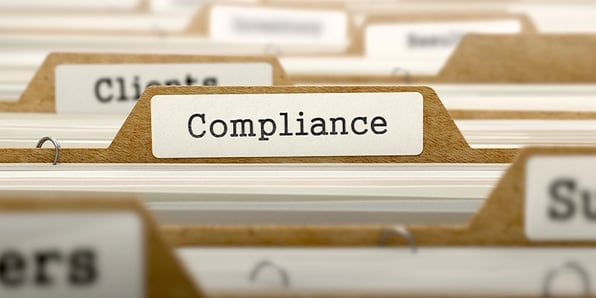Home Care Billing and Compliance Go Hand in Hand

It’s hard to separate these very different disciplines in home care. Today, we’ll break down how they work so closely together, and best practices to get it right.
Billing is a delicate discipline that requires precision and accuracy (and of course, time). The same can be said for compliance. But at the intersection—compliant billing—lies an even deeper layer of care and attention.
Did you know the average home care business spends 100 days each year on billing? That’s a little less than a third of your year, a large portion of time that could be spent developing relationships and solving complex problems.
Compliance, when not done with a fine-tooth comb, can result in large fines. It takes getting billing and compliance right the first time around that makes home care run most efficiently and successfully for all.
Let’s get into it.
State regulations require different home care billing standards.
Certain MCOs, in some instances, require you to bill for the full shift, even if care isn’t provided for the full time. You’re no stranger to those requirements, but what do we do about it?
Manually tracking time used versus time billed can be cumbersome and cause a headache, even in the most experienced home care billers.
When you are evaluating agency management solutions, make sure that they have different ways to annotate shifts for proper billing. CareTime, for example, offers 3 options:
- Auth Limits: What you would see in an authorization
- Confirmed/Unconfirmed: What your caregivers physically worked
- Remaining: How many hours are left
Here is an example of what a client’s service authorization utilization report looks like in CareTime. This level of visibility makes it easy to see if clients have unutilized service hours that caregivers could have on their schedule.
You might not need these settings for all clients, but it’s important to have when serving third-party clients. Even then, you might have a private pay client that sends a caregiver home early, so their clock-out time won’t fully reflect what the caregiver gets paid.
Moving toward technology-based solutions that enable your billing while staying compliant will be key to helping you save hours each week.
What are the benefits of more detailed billing features?
For home care owners, new and veteran, the pains of billing especially as it relates to compliance can snowball and become overwhelming. Dr. Malik, Founder of America A Care had difficulties billing Medicaid and it required a steep learning curve. While no system can take away the complexities of Medicaid billing, your agency management system has the ability to make it easier on you.
With claims getting denied for small, seemingly minor details, every line item matters. Learn more about how Dr. Malik leveraged CareTime to make billing easier and to manage his backoffice.
Getting this level of depth and visibility into your billing structures is important for a few other reasons:
- Caregivers need to get paid properly.
- Clients and families need to have a 360-degree understanding of who is in the home performing tasks and when.
Aside from state-specific regulations, the VA, as an example, may bill in 15-minute units depending on the authorization. And the shift details can help support the client’s continued certification of benefits.
For a bath aide authorization, your caregivers might notate that the client had difficulty in the shower and utilized a shower chair for safety. These insights are valuable, not only for clinical reasons, but for the VA, they might increase hours based on need and per the service coordinator.
When your clients might not pay for their care out of pocket, their families and for their own knowledge, will want some visibility into what’s going on in the home.
Electronic visit verification or EVV makes that easy. These systems record the caregiver’s GPS location when they clock in and out, as well as timestamps for care tasks completed. They also monitor for notes that come through.
These logs and data points help to illustrate a client’s home care journey, providing valuable insights into their health and can indicate changes in condition.
How CareTime V3 can help you knock out two birds with one stone.
We recently unveiled CareTime V3, the next iteration of our platform to make your life easier. Listening to our customers, we added three new features designed to save you time:
- Billing while you sleep
- Automated rules engine
- Everything in one place
Billing while you sleep: Set and forget the rules for your payers, and let CareTime file claims for you overnight. Wake up to a notification with how many were submitted on your behalf.
Automated rules engine: Set specific rules for each payer source, and get alerted to claims that might get denied (before you submit them).
Everything in one place: See all of your claims and EVV in one dashboard with real-time status updates.
With more and more payer sources in the market than ever before, you need a system designed to integrate with them for compliant billing.
[Learn more about how CareTime V3 can help your home care agency scale]
Get Awesome Content Delivered Straight to Your Inbox!
Posts by topic
- Home Care Management
- Electronic Visit Verification (EVV)
- billing
- Caregiver Recruitment and Retention
- EVV software
- Home Care Management for Franchises
- payor types
- Homecare Homebase
- Revenue Growth
- Compliance
- caregiver registry
- Business
- Medicaid Billing
- Revenue Cycle Management
- Third Party Billing
- medicaid
- Medical Billing Software
- Medicare
- Press Release
- payor
- Marketing & Sales
- Operations
- Outsource Your Medical Billing
- RCM
- Scheduling
- cdpap
- legislation
- regulations
- Events
- Industry Insights
- Lifestyle
- leadership
- partners
- referrals See All See Less

.png?width=620&height=620&name=Grow-Your-Caregiver-Network-eBook-Download%20(1).png)

.png?width=596&name=Ops%20Platform%20BLog%20(3).png)
